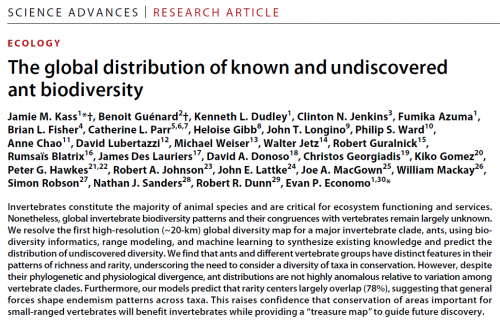Invertebrates constitute the majority of animal species and are critical for ecosystem functioning and services.
Nonetheless, global invertebrate biodiversity patterns and their congruences with vertebrates remain largely unknown.
We resolve the first high-resolution (~20-km) global diversity map for a major invertebrate clade, ants, using bio-
diversity informatics, range modeling, and machine learning to synthesize existing knowledge and predict the
distribution of undiscovered diversity. We find that ants and different vertebrate groups have distinct features in their
patterns of richness and rarity, underscoring the need to consider a diversity of taxa in conservation. However, despite
their phylogenetic and physiological divergence, ant distributions are not highly anomalous relative to variation among
vertebrate clades. Furthermore, our models predict that rarity centers largely overlap (78%), suggesting that general
forces shape endemism patterns across taxa. This raises confidence that conservation of areas important for
small-ranged vertebrates will benefit invertebrates while providing a “treasure map” to guide future discovery.
The journal paper can be accessed from here.

